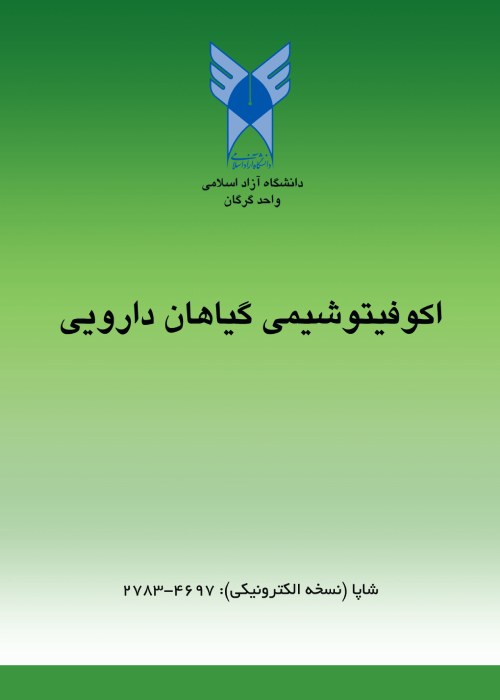The reaction of Eryngium campestre plant to glycine, nitroxine and humic acid and investigating the effect of its extract on dealing with Staphylococcus aureus and Pseudomonas aeruginosa bacteria
Eryngium campestre is a biennial herbaceous plant native to northern Iran. Nowadays, the use of chemical fertilizers has increased significantly, which has irreparable effects on the environment and human health. The use of organic compounds and biofertilizers instead of chemical fertilizers has recently received much attention. Also, it is more important to study about natural substances that contain more antimicrobial properties and less side effects, such as plant extracts. For this purpose, an experiment was conducted. This experiment was conducted in Gorgan University of Agricultural Sciences and Natural Resources in 2019-2020 in a factorial format based on a completely randomized design with 3 replications. The treatments included: nitroxin (0, 1 and 2 ml/l), humic acid (0, 1 and 2 ml/l), glycine (0, 75 and 150 mg/l). The measured traits included total phenol, total flavonoid, antioxidant activity, total sugar, chlorophyll, carotenoid and activity of catalase and peroxidase enzymes. The effect of glycine on the measured traits was significant except flavonoids and catalase enzyme activity at 5 and 1% levels. Also, the effect of nitroxin on the measured traits was significant at the level of 1%. The effect of humic acid on the measured traits was significant except for the amount of antioxidant activity, chlorophyll and catalase enzyme activity at the level of 5 and 1%. Also, the interaction effect of all three treatments on the measured traits except catalase enzyme was significant at 1% level. In general, the results showed that the treatments used in this research, individually and in combination (interaction effect), increased most of the measured traits. Also, an experiment was conducted regarding the effect of Eryngium campestre extract on the population of Pseudomonas aeruginosa and Staphylococcus aureus bacteria. The results showed that Eryngium campestre extract did not inhibit the bacteria. In general, the results showed that the used compounds can be used to improve the biochemical characteristics of the Eryngium campestre.
- حق عضویت دریافتی صرف حمایت از نشریات عضو و نگهداری، تکمیل و توسعه مگیران میشود.
- پرداخت حق اشتراک و دانلود مقالات اجازه بازنشر آن در سایر رسانههای چاپی و دیجیتال را به کاربر نمیدهد.


